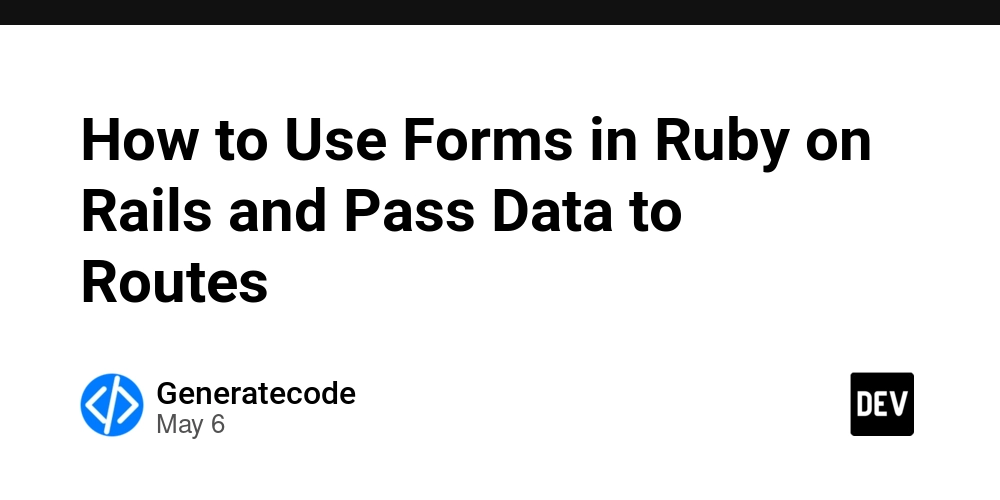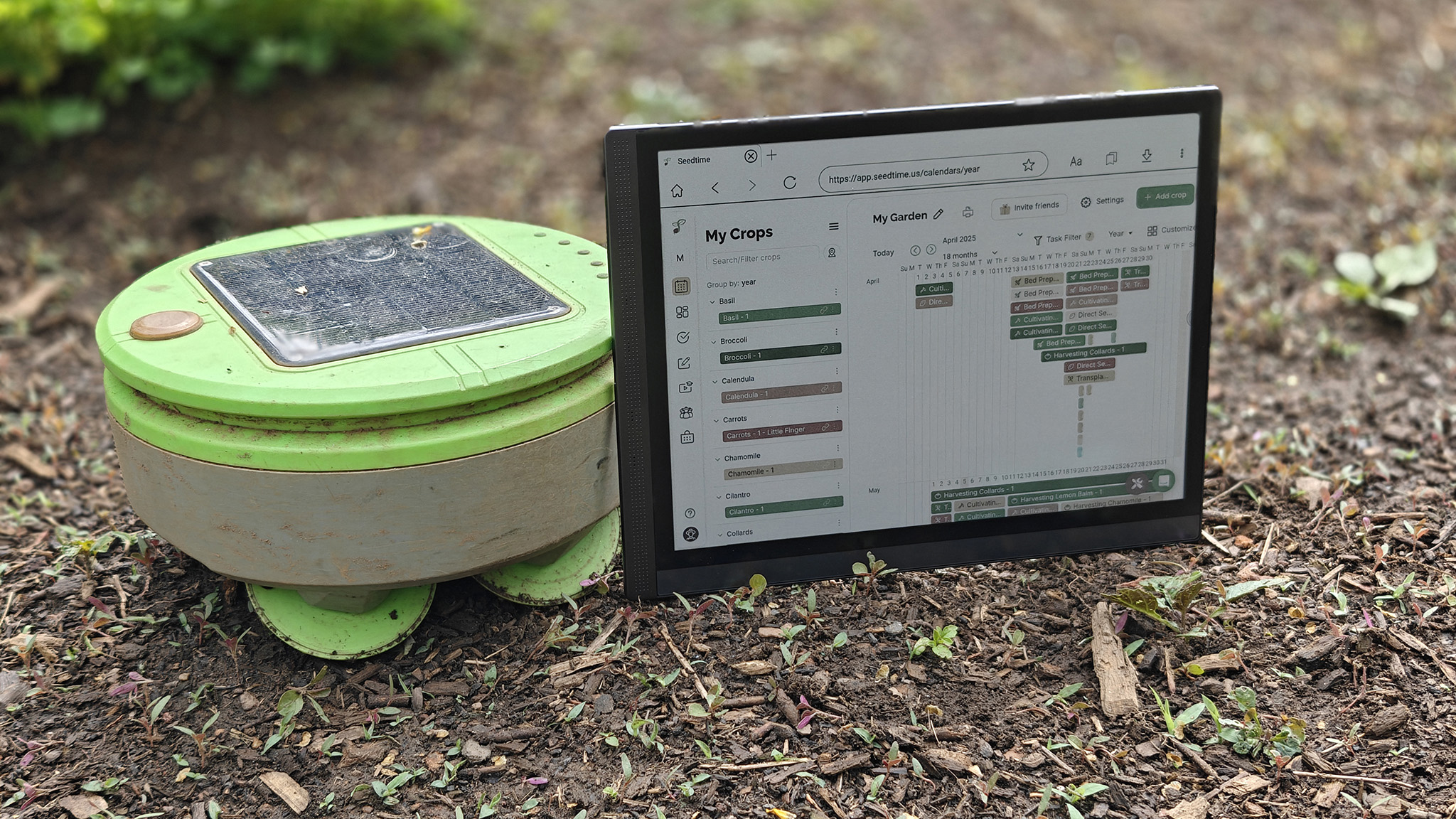How to Use Forms in Ruby on Rails and Pass Data to Routes
If you're diving into Ruby on Rails, understanding how to effectively use forms is crucial for creating interactive applications. In this article, we'll explore how to create a basic form in Ruby on Rails and pass data to a route using simple examples. You'll learn about the structure of a form and how to submit data securely, which is essential for any web application. Why Use Forms in Ruby on Rails? Forms are fundamental in web applications as they enable users to input data. Whether you're collecting user information, comments, or other types of data, forms serve as the primary interface for user interactions. In Ruby on Rails, handling forms is made simple with built-in helpers that streamline the process and ensure your application remains secure. Setting Up Your Rails Application Before we jump into creating forms, ensure you have your Rails application set up. If you're starting from scratch, you can create a new Rails application with the following command: rails new my_app cd my_app Once you’ve created your application, let’s generate a scaffold to work with. For instance, if we want to create a basic Post model: rails generate scaffold Post title:string content:text rails db:migrate Now that we have our Post model and the necessary views, we can move on to using forms. Creating a Form in Rails To create a form for our Post model, we can use the Rails form helper methods. Here’s a simple example of a form that allows users to create a new post: Example of a Basic Form In your app/views/posts/new.html.erb file, you can create a form as follows: Create a New Post prohibited this post from being saved: Explanation of the Code form_with: This helper creates a form for a specific model (@post). The local: true option ensures that the form submits using traditional HTTP requests instead of AJAX. form.label & form.text_field: These helpers generate the corresponding input fields for the title and content attributes of the post. Error Handling: The form includes a section to display validation errors that may occur during the submission. Passing Data to Routes Next, we need to ensure that when the form is submitted, the data is sent to the correct route where it can be processed by the server. In our case, when a user submits the form, it will automatically pass the data to the create action in the PostsController. Rails knows how to do this because of the conventions it uses. The Create Action In app/controllers/posts_controller.rb, you have the following code: class PostsController < ApplicationController def new @post = Post.new end def create @post = Post.new(post_params) if @post.save redirect_to @post, notice: 'Post was successfully created.' else render :new end end private def post_params params.require(:post).permit(:title, :content) end end Explanation of the Create Action new: This action initializes a new Post object for the form. create: This action handles the form submission. It uses strong parameters (post_params) to ensure only the permitted data is saved to the database. If the post is saved successfully, the user is redirected to the created post page. Otherwise, the form is re-rendered with error messages. Frequently Asked Questions (FAQ) 1. What if I want to send additional data with the form? You can simply add hidden fields in your form. For example: 2. How can I customize the form's appearance? You can use CSS or a front-end framework like Bootstrap to style your forms. Simply add classes to your form elements as needed. 3. Are there any security measures I need to take? Always ensure your forms are protected from CSRF attacks. Rails includes a CSRF token with forms by default, which is included with the form_with method. Conclusion In this article, we explored how to use forms in Ruby on Rails for creating and editing resources. We covered the basics of creating a form, submitting data, and handling the response. Now that you have a foundational understanding, you can enhance your forms further by adding validations and custom styles, making your application more user-friendly.

If you're diving into Ruby on Rails, understanding how to effectively use forms is crucial for creating interactive applications. In this article, we'll explore how to create a basic form in Ruby on Rails and pass data to a route using simple examples. You'll learn about the structure of a form and how to submit data securely, which is essential for any web application.
Why Use Forms in Ruby on Rails?
Forms are fundamental in web applications as they enable users to input data. Whether you're collecting user information, comments, or other types of data, forms serve as the primary interface for user interactions. In Ruby on Rails, handling forms is made simple with built-in helpers that streamline the process and ensure your application remains secure.
Setting Up Your Rails Application
Before we jump into creating forms, ensure you have your Rails application set up. If you're starting from scratch, you can create a new Rails application with the following command:
rails new my_app
cd my_app
Once you’ve created your application, let’s generate a scaffold to work with. For instance, if we want to create a basic Post model:
rails generate scaffold Post title:string content:text
rails db:migrate
Now that we have our Post model and the necessary views, we can move on to using forms.
Creating a Form in Rails
To create a form for our Post model, we can use the Rails form helper methods. Here’s a simple example of a form that allows users to create a new post:
Example of a Basic Form
In your app/views/posts/new.html.erb file, you can create a form as follows:
Create a New Post
<%= form_with(model: @post, local: true) do |form| %>
<% if @post.errors.any? %>
<%= pluralize(@post.errors.count, 'error') %> prohibited this post from being saved:
<% @post.errors.full_messages.each do |message| %>
- <%= message %>
<% end %>
<% end %>
<%= form.label :title %>
<%= form.text_field :title %>
<%= form.label :content %>
<%= form.text_area :content %>
<%= form.submit %>
<% end %>
Explanation of the Code
-
form_with: This helper creates a form for a specific model (
@post). Thelocal: trueoption ensures that the form submits using traditional HTTP requests instead of AJAX. -
form.label & form.text_field: These helpers generate the corresponding input fields for the
titleandcontentattributes of the post. - Error Handling: The form includes a section to display validation errors that may occur during the submission.
Passing Data to Routes
Next, we need to ensure that when the form is submitted, the data is sent to the correct route where it can be processed by the server. In our case, when a user submits the form, it will automatically pass the data to the create action in the PostsController. Rails knows how to do this because of the conventions it uses.
The Create Action
In app/controllers/posts_controller.rb, you have the following code:
class PostsController < ApplicationController
def new
@post = Post.new
end
def create
@post = Post.new(post_params)
if @post.save
redirect_to @post, notice: 'Post was successfully created.'
else
render :new
end
end
private
def post_params
params.require(:post).permit(:title, :content)
end
end
Explanation of the Create Action
-
new: This action initializes a new
Postobject for the form. -
create: This action handles the form submission. It uses strong parameters (
post_params) to ensure only the permitted data is saved to the database. - If the post is saved successfully, the user is redirected to the created post page. Otherwise, the form is re-rendered with error messages.
Frequently Asked Questions (FAQ)
1. What if I want to send additional data with the form?
You can simply add hidden fields in your form. For example:
<%= form.hidden_field :user_id, value: current_user.id %>
2. How can I customize the form's appearance?
You can use CSS or a front-end framework like Bootstrap to style your forms. Simply add classes to your form elements as needed.
3. Are there any security measures I need to take?
Always ensure your forms are protected from CSRF attacks. Rails includes a CSRF token with forms by default, which is included with the form_with method.
Conclusion
In this article, we explored how to use forms in Ruby on Rails for creating and editing resources. We covered the basics of creating a form, submitting data, and handling the response. Now that you have a foundational understanding, you can enhance your forms further by adding validations and custom styles, making your application more user-friendly.







































































































































































![[The AI Show Episode 146]: Rise of “AI-First” Companies, AI Job Disruption, GPT-4o Update Gets Rolled Back, How Big Consulting Firms Use AI, and Meta AI App](https://www.marketingaiinstitute.com/hubfs/ep%20146%20cover.png)

















































































































































































.jpg?width=1920&height=1920&fit=bounds&quality=70&format=jpg&auto=webp#)





















































































_Brian_Jackson_Alamy.jpg?width=1280&auto=webp&quality=80&disable=upscale#)

_Steven_Jones_Alamy.jpg?width=1280&auto=webp&quality=80&disable=upscale#)


 Stolen 884,000 Credit Card Details on 13 Million Clicks from Users Worldwide.webp?#)






























































































![Google rolling out Nest Wifi Pro April 2025 update [U]](https://i0.wp.com/9to5google.com/wp-content/uploads/sites/4/2022/10/Nest-Wifi-Pro-1.jpg?resize=1200%2C628&quality=82&strip=all&ssl=1)














![Apple Releases iOS 18.5 RC and iPadOS 18.5 RC to Developers [Download]](https://www.iclarified.com/images/news/97230/97230/97230-640.jpg)

![Apple Seeds watchOS 11.5 RC to Developers [Download]](https://www.iclarified.com/images/news/97235/97235/97235-640.jpg)
![Apple Watch Shipments Declined 19% Year-over-Year in 2024 [Report]](https://www.iclarified.com/images/news/97229/97229/97229-640.jpg)
































































































